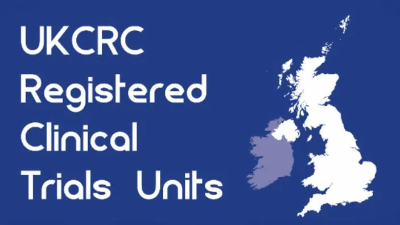
PARTNER
Platinum and PARP inhibitor for Neoadjuvant treatment of Triple NEgative and/or BRCA positive breast cancer: Randomised, phase II/III, 3 stage trial to evaluate the safety and efficacy of the addition of olaparib to platinum-based neoadjuvant chemotherapy in breast cancer patients with TNBC and/or gBRCA.
Research summary
Breast cancer is the most common female cancer worldwide, and the second most common cancer overall, with more than 1,676,000 newly diagnosed in 2012 (25% of female cancer cases and 12% of the total). Although advances in screening, surgical intervention, radiotherapy and systemic therapies have improved survival, worldwide approximately 522,000 women died as a result of their breast cancer in 2012. Breast cancer is a heterogeneous disease and there are many ways to classify it, including using traditional histopathological features, immunohistological and molecular classifications.
Several studies have now provided evidence that supports the use of platinum-based chemotherapy as part of the first line treatment of Homologous Recombination Deficient (HRD) patients, and potentially also with TNBC patients. Byrski reported a pCR rate of 83% with neoadjuvant cisplatin chemotherapy in gBRCA1 patients, in a small (n=12) non-randomised retrospective analysis. Von Minckwitz reported the GeparSixto trial, with an increase in pCR from 36.9% to 53.2% (p=0.005) with the addition of platinum to standard neoadjuvant regimens in TNBC patients. In the CALGB 40603 neoadjuvant study, Sikov confirmed that pCR increases to 49% (where pCR is defined as previously - absence of invasive disease in breast and axillary lymph nodes) in stage II-III TNBC with the addition of carboplatin to weekly paclitaxel, in a 2 x 2 factorial design with bevacizumab. gBRCA patients may achieve higher pCR rates of 57.9%, data presented by von Minckwitz, ASCO 2014.
The selection of the agents and doses has been developed using data from CALGB 40603 neoadjuvant TNBC trial and doses have also been informed by the ICON8 trial. CALGB 40603 used 3 weekly carboplatin AUC 6 and paclitaxel 80mg/m2 weekly (q3weeks). However, due to the potential for myelosuppression in combination with olaparib, the carboplatin dose has been reduced to AUC 5 for the PARTNER trial. ICON8 is a randomised 3-arm, 3-stage phase III trial to evaluate the safety and efficacy of dose-dense, dose-fractionated carboplatin-paclitaxel chemotherapy in the first-line treatment of ovarian cancer. ICON8 uses paclitaxel 80mg/m2 weekly with carboplatin AUC 5 x 3 (q3 weeks) and although the early safety data on arm 3 show that the dosing is safe and well-tolerated, the ICON8 Independent Data and Safety Monitoring Committee (IDSMC) report has recommended the use of prophylactic Granulocyte Colony Stimulating Factor (G-CSF) with each cycle.
In addition, the ISPY2 trial has used a 3 weekly regimen of carboplatin and weekly paclitaxel with a PARP inhibitor veliparib in a neoadjuvant phase II successfully (in the TNBC cohort pCR 51% PARP inhibitor arm vs 26% standard treatment arm) and without excessive toxicity. Combining data from both these studies, in the PARTNER trial we will use carboplatin AUC5 three weekly and paclitaxel 80mg/m2, weekly for 12 weeks. In addition, the trial mandates using the G-CSF as primary prophylaxis as per local practice, unless there are any contra-indications or due to cessation for clinical reasons in the judgement of the clinician caring for the patient. G-CSF has previously been used with olaparib and chemotherapy combinations without problems.
Main inclusion criteria
- Aged between 16 and 70.
- Written informed consent, willing and able to comply with the Protocol for the duration of the trial including undergoing treatment and scheduled visits and examinations.
- Histologically confirmed invasive breast cancer.
- ER-negative*, and HER2-negative** breast cancer (TNBC). Patients will be eligible with any PR status but PR expression must be scored.
- Germline BRCA (gBRCA) mutation positive, HER2 negative, and PgR / ER of any status.
- T1, T2 or T3 tumours.
- T4 tumour of any size with direct extension to (a) chest wall or (b) skin. OR Inflammatory carcinoma with tumour of any size. OR Other Locally Advanced Disease:
- Involvement of ipsilateral large or fixed axillary lymph nodes, or infra or supraclavicular nodes (>10mm diameter or clinical N2 or N3) and primary breast tumour of any diameter.
- Involvement of ipsilateral large or fixed axillary lymph nodes, or infra or supraclavicular nodes (>10mm diameter, or clinical N2 or N3), without a primary breast tumour identified, the presence of breast cancer in a Lymph Node (LN) must be histopathologically confirmed by LN biopsy.
- Multifocal tumour with at least one tumour with a size>10mm:
- Patients with bilateral disease are eligible to enter the trial provided that both breast disease meets the above criteria.
- Be fit to receive the trial chemotherapy regimen in the opinion of the responsible clinician, measured by adequate bone marrow, hepatic, and renal function. ECOG performance status of 0, or 1
- Treatment should be commenced within 6 weeks of the diagnostic biopsy. In uncommon circumstances, where medically acceptable, treatment is permitted to start within a maximum of 9 weeks of the diagnostic biopsy.
- Availability of the Tumour Infiltrating Lymphocytes score is required.
- Availability of CK 5/6 and EGFR +/- Androgen Receptor IHC score.
- Availability of slides and paraffin embedded tissue blocks from pre-chemotherapy core biopsy and from primary surgical resection is required.
- Women of child-bearing potential (WCBP), defined as not surgically sterilized or not post-menopausal for at least 24 consecutive months if age ≤55 year or 12 months if age >55 years, must have a negative serum or urine pregnancy test within 14 days prior to randomisation.
- All WCBP and all sexually active male patients as well as their partners must be aware that they should not conceive during the treatment period and therefore should routinely use effective forms of contraception, throughout their participation in the trial and for at least 6 months after the last dose of trial treatment. Please follow the olaparib contraception guidelines.
Main exclusion criteria
- T0 tumour in absence of axillary node > 10mm
- TNBC with a non-basal phenotype and overexpressing Androgen Receptor
- Previous or concomitant chemotherapy or biological agents used for the treatment of cancer in the last 5 years.
- Malignancy within the last 5 years except: adequately treated non-melanoma skin cancer; curatively treated in situ cancer of the cervix; ductal carcinoma in situ (DCIS); Stage 1, grade 1 endometrial carcinoma; or other solid tumours including lymphomas (without bone marrow involvement) curatively treated with no evidence of disease for ≥5 years.
- Patients with myelodysplastic syndrome/acute myeloid leukaemia.
- Evidence of distant metastasis apparent prior to randomisation.
- Patients with uncontrolled seizures.
- Pre-existing sensory or motor neuropathy of CTCAE v4.03, grade ≥2.
- Concomitant use of known potent CYP3A4 inhibitors and inducers. Consider wash-out periods.
- Pregnant or breast feeding women.
- Not suitable for neoadjuvant chemotherapy in the opinion of the responsible clinician.
- Major surgery within 14 days of starting trial treatment and patients must have recovered from any effects of any major surgery.
- Any evidence of other disease or any concomitant medical or psychiatric problems which in the opinion of the Investigator would prevent completion of treatment or follow-up.
- ECG with mean resting QTc >470 msec on 2 or more time points within a 24 hour period or family history of long QT syndrome.
- Patients unable to swallow orally administered medication and patients with gastrointestinal disorders likely to interfere with absorption of the trial medication
- Known hypersensitivity to olaparib, carboplatin, paclitaxel or their excipients (including cremophor).
- Whole blood transfusions in the last 120 days prior to blood sampling for BRCA test as it may interfere with the results (packed red blood cells and platelet transfusions are acceptable).
Funders and sponsors
Funders: AstraZeneca & Cancer Research UK
Sponsors: Cambridge University Hospitals NHS Foundation Trust and University of Cambridge






